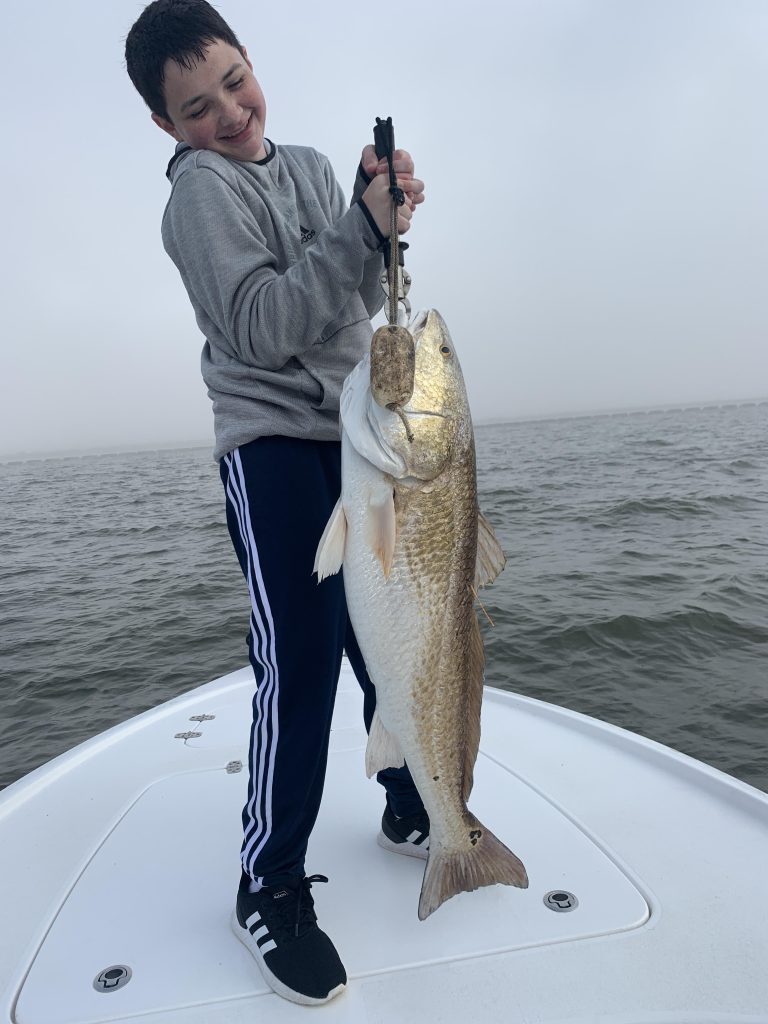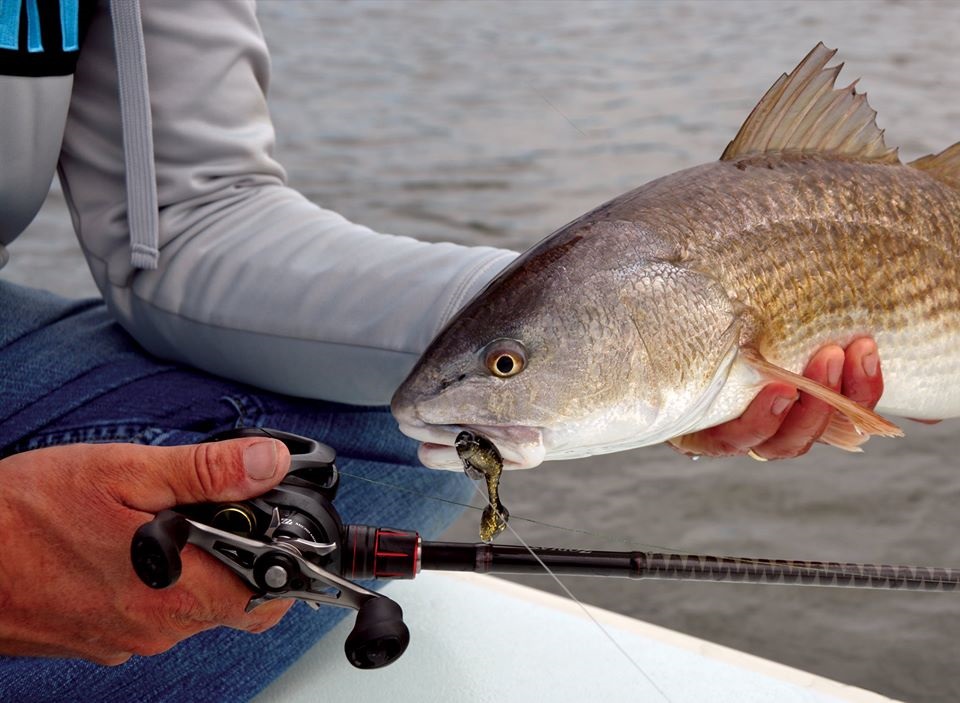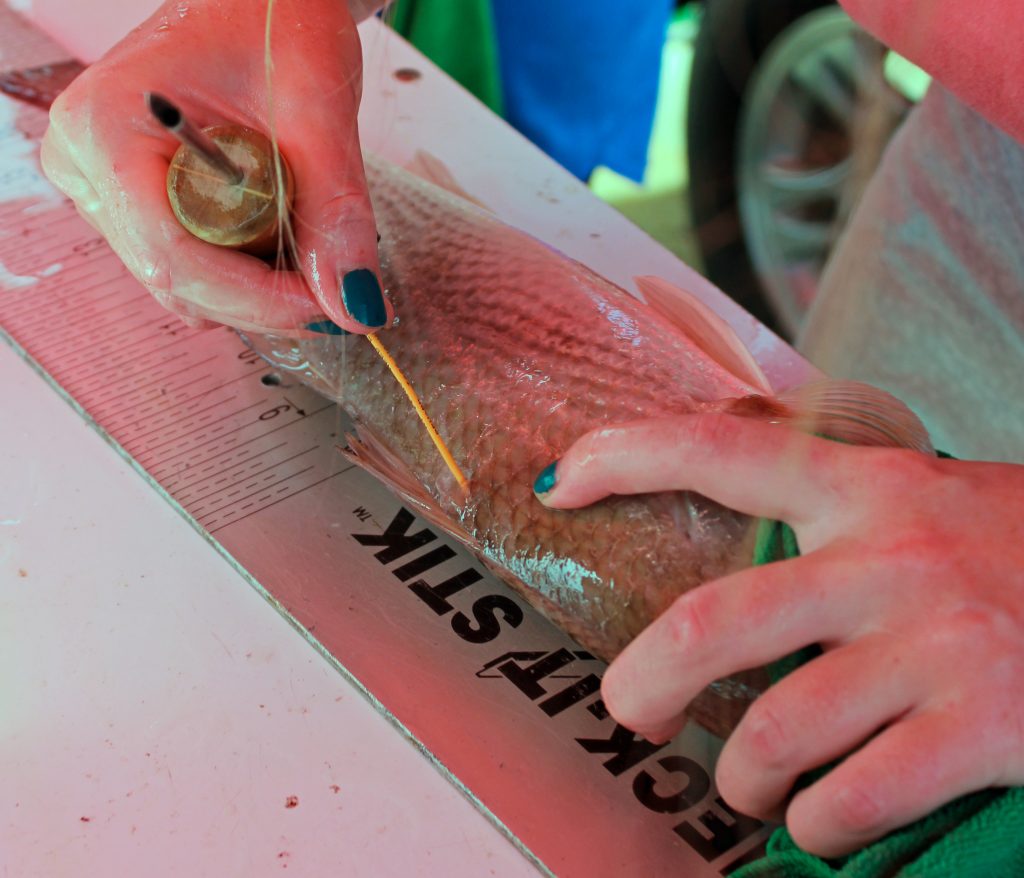Bull Redfish Fishing Explained
Bull redfish, aka channel bass or red drum, are one of the most pursued inshore gamefish anywhere along the north shore of the Gulf of Mexico, but fisheries scientists and state fishery managers face a continuing need for up-to-date data on fish numbers and migrations to assure the fishery stays healthy and productive.
Alabama’s Coastal Conservation Association (CCA), coastal fishing guides and researchers are teaming up to help provide that data through a large-scale tagging program.
“TAG Alabama” is a partnership between CCA Alabama, the University of South Alabama Department of Marine Sciences and the Dauphin Island Sealab. It’s the first recreational angler tagging program in Alabama. TAG Alabama gives CCA members in the state the opportunity to participate in user-based data and research on not only redfish but also speckled trout.

Catching redfish for tagging purposes is a great fight, great fun, and is beneficial for the fish as well.
All active CCA members who fish in Alabama’s coastal waters are eligible to become taggers. According to Blakely Ellis, executive director of CCA-Alabama, tagger orientation sessions take place throughout the year, and after attending the seminar, participants are ready to start tagging.
“Once they complete an orientation session, they receive a free tagging kit that includes 25 redfish tags, 25 speckled trout tags, and a tag applicator,” Ellis said. “Anglers who catch a fish with one of the tags are asked to follow the instructions on the tag and report the info to the website http://tags.usouthal.edu.”
All anglers who capture and report a tagged fish will receive their choice of a CCA hat or t-shirt.
At the end of each year, the program gives a variety of prizes to the top tagging participants who deployed the most tags. The prizes range from COSTA sunglasses to AFTCO gear, and products from other conservation partners.
Since its inception, TAG Alabama has tagged 2,615 redfish with 424 recaptures for a recapture rate of 16 percent, Ellis said. For speckled trout, 2,364 fish have been tagged with a recapture of 206 fish for a recapture rate of 8.7 percent.
Ellis noted that the high recapture rate is a sign that the tags are staying in, so most taggers are doing a good job.
So far, the tagging program indicates most redfish don’t move a whole lot, though a few outliers do make some major migrations.
University of South Alabama graduate student Dylan Kiene, who helps coordinate the program through the Dauphin Island Fisheries Ecology Lab, said one redfish tagged at Dauphin Island went to Pensacola in about a month, and one tagged in the Mobile River, at the head of Mobile Bay, went all the way to Lake Pontchartrain in Louisiana in a little over four months.

The new tagging program for these monster redfish will be beneficial to see just how they go about their lives.
New to the Tag Alabama program is the “bull” redfish tag that was handed out to participants recently. Fish larger than 26 inches are considered bull redfish, but Kiene would prefer to see anglers tag fish 30 inches and larger.
“With the bull red tags, once we get enough of these out, it’s going to be interesting to see if these fish are going offshore where they’re supposed to be spawning or going up into the Delta,” Kiene said.
Ellis said CCA Alabama also recently approved funding for USA Marine Sciences to do a study on offshore bull reds with acoustic and satellite tags.
Anglers participating in the TAG Alabama program can report tagging data through the Fishing Chaos app, at www.tags.usouthal.edu, which is best used on a computer, or 1-800-372-5950. Kiene said the Fishing Chaos app blurs the angler’s tag capture location data to keep that information private.
Anglers interested in participating in this program or with questions can contact CCA Alabama at info@ccaalabama.org or call the CCA state office at 251-478-3474.
Both the seminars and the tagging program itself cost money, and CCA raises funds to cover the costs through fundraising banquets, donations, and through their saltwater fishing CCA Alabama license plate sales. Forty-two dollars of the fifty dollar cost comes back to CCA Alabama to help them with their conservation projects including the TAG Alabama program.
How To Catch Redfish
Captain Richard Rutland of Cold Blooded Fishing is not only one of the leading proponents and organizers of the tagging program and largely responsible for getting the CCA involved, he’s also one of the top redfish guides on Mobile Bay. Rutland on his own tags over 400 redfish per year for the program, and has found thousands more for his clients.
Here are some of his tips for finding late winter and early spring fishing for redfish, especially some of the “bulls” that are particularly sought in the tagging program.
“The bull reds really start schooling up in late February, and by the middle of March the bite is on most years,” Rutland said. “If I had one place to look for them, it would be Dixey Bar at the mouth of Mobile Bay—there will be hundreds of them out there at that time of year.”
The fish also sometimes school up at Sand Island Light, and around the gas rigs in lower Mobile Bay as well as along the beaches.
He says finding the fish is a matter of easing in on the upwind or uptide side of the bar and looking for slicks, jumping bait or diving birds, then sliding into casting range.
“I usually have my clients rigged up with 3/8 ounce jig heads with four to six inch soft plastics or FishBites Brawler or Boxer or Fightin’ Shrimp, and everybody fan-casts until one of them hits a fish, then we all cast in that direction.”

Soft plastic baits are perfect for catching redfish.
He says that at times the fish go into a frenzy and will hit practically anything.
“I’ve occasionally caught them on a bare jig head when the plastic pulls off,” he noted.. “They can be a lot of fun on topwaters, too, but it’s best to flatten your barbs so you can get the hooks out of them easily.”
He whips the fish on surprisingly light tackle considering that they range from 30 inches up to 46 inches long.
“I like a 7 to 7’6” medium light rod, 2500 size reel and 15 pound test braid, with a fluorocarbon leader of 20 to 30 pound test,” Rutland said. “It’s the same gear we catch trout on, but it does the job if you have the drag set right. We usually have them on the boat in under 10 minutes.”
Rutland noted that the abundance of fish sometimes results in everybody aboard hooked up at once, creating what he calls the “Dixey Bar Shuffle” as anglers duck over each other battling the fish.
Once a fish is at the boat, he brings out a jumbo landing net to scoop it aboard.
“They’re so heavy you have to pick up the net by the hoop, not by the handle otherwise they break it off,” he said.
He advises anglers interested in tagging some of these fish to have their tagging kit on deck and ready to go, with the tag number already recorded.
“Ideally, I like to get the hook out, get the fish measured, tagged and photographed and then back in the water in around a minute,” said Rutland. “That way, we very rarely lose a fish.”
While many tags have been returned on smaller reds and seatrout in the program so far, very few have come back from the bull redfish. Rutland is hopeful that will change as more anglers participate in bull red fishing and more of the jumbos get tagged.

Have your tagging kit ready so your bull redfish goes from hook to tagged to back in the water as quickly, and safely, as possible.
“As the water starts to warm up in May, they disperse and then we’ll only catch one or two here and there. I think most of them go offshore, but it would be great to have tag returns and actually know where they go. Hopefully we can help make that happen with more taggers.”
Contact Info
Cold Blooded Fishing
251-459-5077
Full Disclosure: This post may include affiliate links. There’s no extra charge to our readers for using these.
